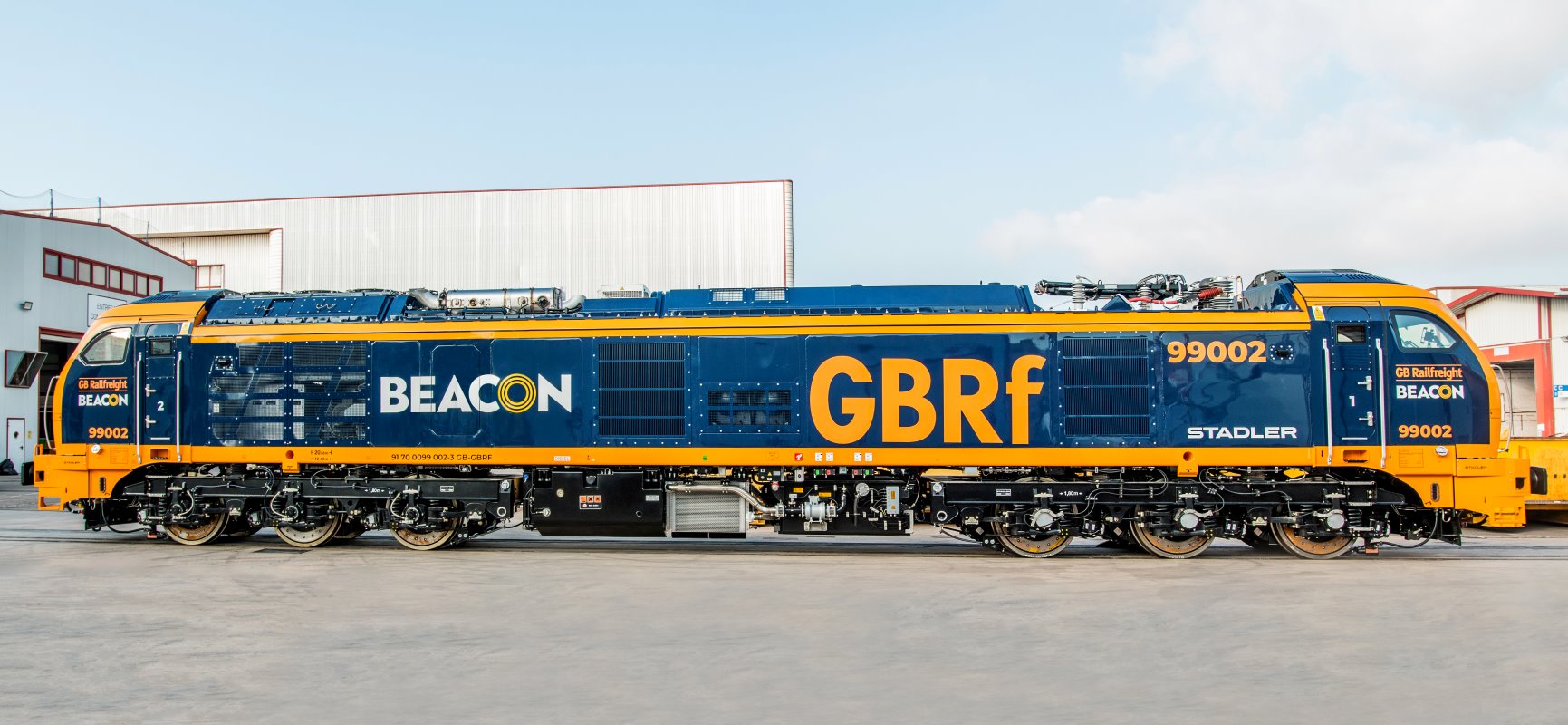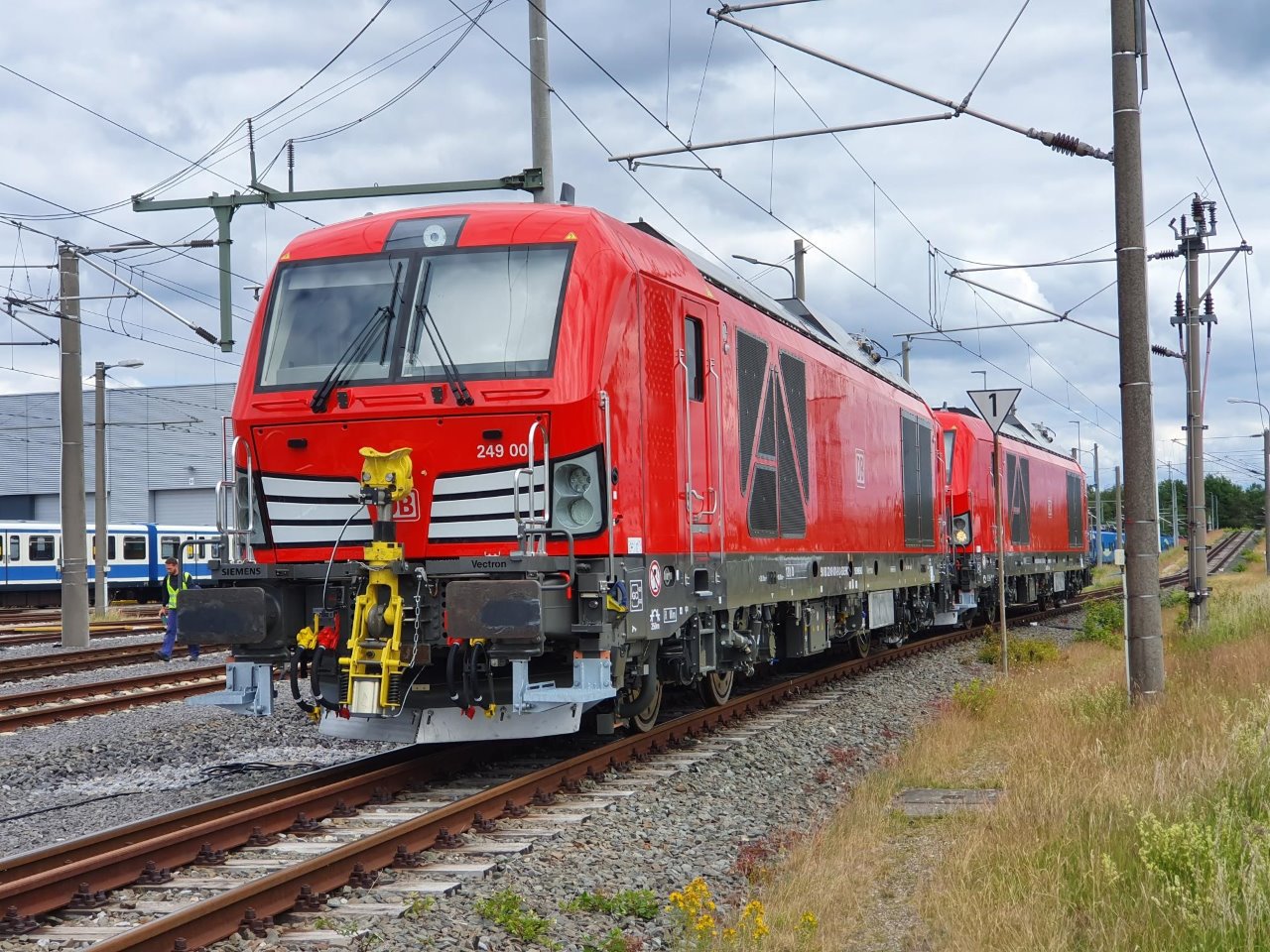Locomotive can switch between pure electric and Cummins diesel power with HVO capability.
Siemens Mobility’s pioneering Vectron Dual Mode locomotive is expected to play a huge role in reducing carbon emissions generated by the European rail sector in the coming years.
The Vectron Dual Mode Light can be operated with both electric power and courtesy of the Cummins Stage V QST30 – diesel power. The QST30 can also run on hydrotreated vegetable oil (HVO), a key requirement from freight operator giant Deutsche Bahn (DB) Cargo, which has ordered 146 of the locomotives. The dual-mode locomotive seamlessly transitions between electric and diesel power, eliminating the need to switch locomotives for electrified and non-electrified routes. DB Cargo estimates the Vectron will save around 12 million litres of fuel and reduce CO2 emissions by something like 25,000 tonnes per year.
The DB Cargo locomotive comes with a power of 2,210kW in catenary mode and 750 kW in autonomous mode, the locomotive has a maximum speed of 120 kmh and a starting tractive effort of 300 kN. The Vectron Dual Mode light is a member of the Vectron family. The pure electric Vectron locomotives can be delivered for operating with alternating current (AC) or direct current (DC) power systems as well as multisystem (MS) variants in the power classes 5.2 MW, 5.6 MW and 6.4 MW. To date, Siemens Mobility says it has sold more than 2,600 locomotives of the Vectron family to 103 customers in 16 countries, and the fleet has already accumulated over 1,000 million kilometres in service.
Locomotives using the Vectron platform are currently approved for operation in 20 European countries. They will be deployed for both freight and passenger service. Along with the desired national train control system, the locomotives, which are built in the Siemens Mobility plant in Munich – Allach, can also be equipped with the latest European Train Control System (ETCS). The Vectron is able to run on several corridors throughout Europe. Latest corridor approval has been for operating along the Scandinavian Corridor which extends from Austria to Norway via Germany, Denmark and Sweden. This enables both freight and passenger trains to run along the entire corridor without changing locomotives.
The Vectron is the first ETCS-equipped locomotive allowed to operate across the 16 km long Öresund connection (bridge and tunnel) between Sweden and Denmark. Andreas Dammann, Rail Business Manager EMEA for Cummins and in charge of the Vectron project, said InnoTrans 2024 had been a fantastic showcase for Vectron Dual Mode Light and made possible by the shared effort of Cummins, Siemens Mobility and DB Cargo. “The locomotive actually hauled all rolling vehicles to the exhibition before going on display, which sent a strong message about its capability, and the train driver said he thought Vectron was, in his words, a paradigm shift for the rail freight business.” Andreas said Vectron was a classic example of how original equipment manufacturers in the rail sector were tackling the journey toward a sustainable future.
“The rail industry has shown itself to be an early adopter of energy transition technologies, second only to the automotive sector. But getting to zero emissions is not a toggle switch; it’s a journey where new technology slowly but steadily replaces conventional technology.
“Vectron Dual Mode Light is a fantastic step in the right direction and a great example of Cummins and Siemens working together to create carbon-reducing solutions.”
HOW DUAL-MODE WORKS
Dual-mode diesel electric locomotives are a cutting-edge technology that combines the efficiency of electric power and the flexibility of diesel. When operating on electrified tracks, the locomotive draws power from the overhead catenary wires. This mode of operation is highly efficient, with zero in-use emissions and low operating costs. On non-electrified tracks, the locomotive switches to diesel power. The diesel engine drives a generator, which in turn powers the electric motor. This allows the locomotive to operate on any track, regardless of electrification. The locomotive’s control system seamlessly switches between electric and diesel modes depending on the operating conditions. This flexibility is particularly valuable for routes which are not fully electrified, allowing for efficient and uninterrupted service.
Stadler’s Class 99 breaks new ground
High hauling capability and a top speed of 120kmh
Above is the first glimpse in its GB Railfreight livery of the diesel- electric Class 99 locomotive built by Stadler Equipped with a compact low-emissions Cummins Stage V QSK50 diesel engine that can run on HVO, the Class 99 heralds a new generation of locomotives, providing a range of economic and environmental benefits. The Class 99 is built at Stadler’s Valencia works in Spain and adapted for use on the UK railway network. It is based on the proven EURODUAL locomotive concept and features a dual drive system, which means it can operate in purely electric as well as in diesel-electric mode. “Because it can run on both electrified and non-electrified lines, the Class 99 has the potential to replace diesel-powered locomotives such as the widely used Class 66, where a dual locomotive is required, especially in the UK but also throughout Europe,” said Jorge Santoyo Pastor, Cummins’ Rail and Off Highway Sales Leader for Spain.
The Class 99, which was officially revealed at InnoTrans in Berlin last September, is able to operate on a 25 kV AC electrified line and has a power of 6,000 kW. With an impressive tractive effort of 500 kN, it can reach speeds of up to 120 km/h, boasting high hauling capability and performance. Beacon Rail and GB Railfreight have commissioned 30 of these vehicles in an order that is the first of its type in the UK and builds on the success of the EURODUAL six-axle locomotives sold in mainland Europe. The cab is designed with the driver in mind, and is a safe, modern and comfortable working environment. A
centrally positioned seat in combination with the huge front window ensures excellent visibility. State-of-the-art cameras provide direct views of pantographs, shunting zones and the area in front of the locomotive. The two protection systems required on British rail networks, AWS and TPWS, have been fitted. Iñigo Parra, Chief Executive Officer of Stadler Valencia, said: “This environmentally-friendly, efficient and powerful vehicle will encourage modal shift from road to rail, helping the UK decarbonise the railway and supporting net zero targets.”
John Smith, CEO of GB Railfreight, agreed, adding: “The Class 99s represent a game-changing moment for the UK rail freight industry, improving the resilience of our fleet and reducing journey times. These locomotives will be the first to offer rail freight customers the chance to run wholly sustainable, heavy-haul services the length and breadth of the country.”
Adam Cunliffe, Chief Executive Officer of Beacon Rail, said: “ The Class 99 order underlines our drive to support the UK’s journey towards a greener and more efficient rail network.”
Stadler has a 16-year full service contract with GB Railfreight, comprising tailored maintence solutions, modernization and overhaul and the provision of spare parts and material supplies. It covers vehicle repairs and service support, as well as the management of rail data and maintenance software. After dynamic testing at Stadler’s facility in Velim, Czech Republic, the locomotives will be tested in the UK this summer.
For more information on the Cummins engines powering the rail industry visit www.cummins.com/engines/rail
Share on:





